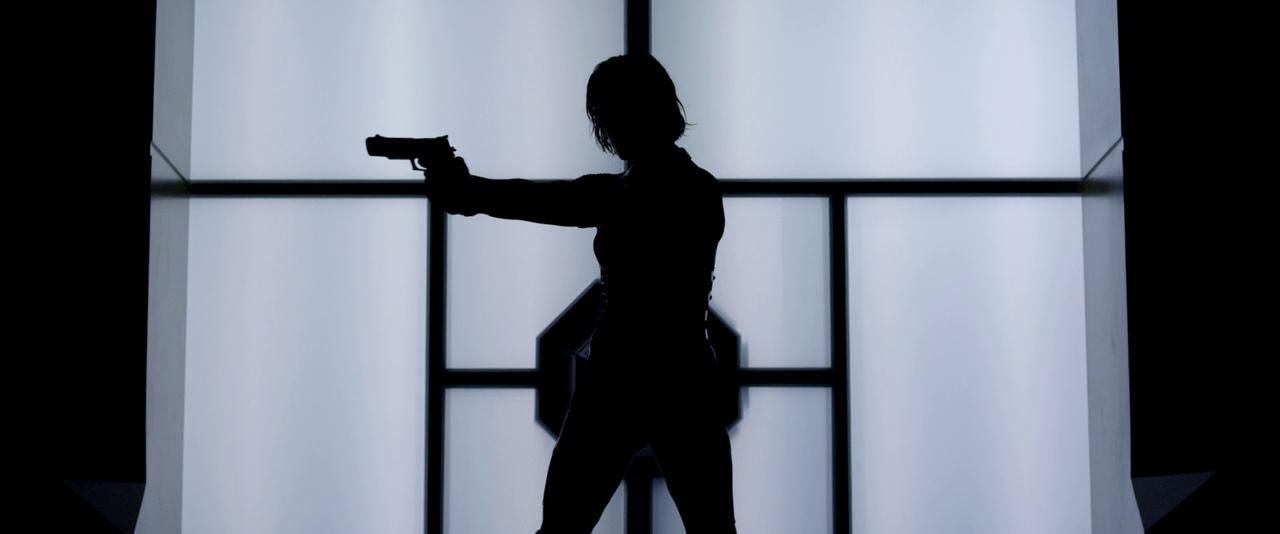Resident Evil: Retribution

Originally published on 10/10/2020 on Letterboxd.
Respectability and what constitutes it in the realm of film has, for much of the American mainstream, been dominated by notions of “subtlety” and rather limited conceptions of what “deep” films are. Films nominated for Academy Awards are typically biopics, self-serious “character pieces” that supposedly explore themes of identity, or some mixture of the two. Films that occupy the genres of science fiction, horror or a combination of the two are scarcely, if ever, nominated for Academy Awards. Of course, a film’s cultural significance and personal value cannot be defined by an Oscar, although films combining both genres have received mainstream acclaim-John Carpenter’s The Thing is a key example of this, as is (to a lesser extent) the Wachowski Sisters’ The Matrix. But then there are films that are installments in franchises consisting of multiple films that are dismissed as “blockbuster trash”, partly due to the influence of rather narrow definitions of quality in much of popular film criticism, and partly because there is a hesitancy to re-evaluate films that may have been completely torn apart by both critics and audiences for not being recognized as the masterworks that they are. Paul W.S. Anderson’s Resident Evil: Retribution, one of the most impressive exercises of image-making in the art of the American blockbuster, is one of these films.
The Resident Evil films marked a stark divergence of films from their video game source material that would go on to become the norm-instead of centering around compact spaces plagued with hordes of the undead and ill-equipped protagonists, they became sprawling exercises in scale and special effects, creating increasingly doomed apocalyptic scenarios with each film. Anderson, however, had only directed the first one after taking a hiatus for the next two films. In Retribution, Anderson lifts the framework of a video game-a simulation-and transposes victims of the engine that controls this larger-than-life environment. Milla Jovovich’s Alice is one of these victims-as a wall of screens succinctly summates at the beginning of the film, undergoing harrowing wars against an army of increasingly grotesque biological weapons has led to her losing everyone that ever mattered to her.
Any semblance of the “real” is flung away at the very opening of the film, where Anderson’s central thesis is presented in a series of stunning visual compositions: helplessness in the form of being literally flung into the tide of conflict dissipates into a one-woman retribution against a representation of corporate malfeasance. Corpses become flailing, helpless victims, which become ruthless biological weapons; this holds true not only for the walking dead that are pitted against our protagonists in a series of Keatonesque setpieces, but for Alice, who is robbed of her bodily autonomy and turned into merely one in a series of identical soldiers. Entrapping Alice within structures of oppression is a deliberate move by Anderson to highlight the interchangeability of roles within the digital; when these structures fling individuals from one identity to another, then is there really any individual autonomy at all? Idyllic American suburbia being one of these very prisons is a distinctly Foucauldian concept, which is one of the many philosophical influences that Anderson, knowingly or unknowingly, incorporates into the text of the film.
The film’s concern with the nature of the simulacrum is perhaps its key uniting element. There is no “continuation” of a franchise in Retribution, because the very meaning of the symbols and characters have been marred beyond recognition-Alice’s very knowledge of the world as it is, is used against her. This Baudrillardian subtext is most clearly evident in the transitions between environments-New York City, drenched in rain and pulsating with life at one moment, becomes a mass grave through which two looming executioners roam. Gradual divorces of the many simulacrums through which Alice trudges from reality occur with direct, unmistakable visual representations; the sky, piece by piece, turns black as the flimsy illusion of suburbia collapses. The transition to the final stage of the digital gauntlet-a frosted-over Siberia-occurs through a literal ascension to this realm on a platform emblazoned with the hammer and sickle, a sly nod to Anderson’s distaste for the hypergovernment/megacorps that engineered the very apocalypse that they profit from. Baudrillard’s highlighting of the reproduction of these simulations (as in the case of another major studio that exercises full control over its products, Disney) is perhaps most evident in the revelation that every character in the film-and throughout every Resident Evil film, in fact-is merely one of a never-ending production line of clones, built to uphold cycles of violence to the ends of perfecting a perfect weapon. Consciousness becomes a commodity like everything else, one that can be replaced and taken away at will. Identity becomes artifice, replicated through the falsification of memory and horrific cycles of the creation of vessels for memory to occupy.
Anderson’s obsession with artificiality reaches its peak, where the slightly unreal battle-worn landscapes that occupied Afterlife become not unlike circuit-boards, stripped of all distinctiveness and reduced to white hallways. The ever-loose ties that the series has had to its videogame source material snap entirely as virtual environments, much like videogames, are constructed and deconstructed in real-time. The bodies of characters from past films are flung unceremoniously into this unsettling new world as they are robbed of their identity and become nothing more than pawns of the profit motive. Fresh green lawns become battlegrounds littered with corpses as a physical representation of false identity-the house that Alice occupied in the suburban simulation-is destroyed by its creators. Reality collapses onto itself and implodes, creating not heat but cold, as the snow-covered Russian landscape demonstrates.
The multiple dioramas that Anderson crafts embody this conflict between the real and the unreal. Stark white halls become streaked with red as blood spills, and the clink of an empty magazine interrupts the strained shrieks of souls trapped between the mortal and the ethereal realm. Violence is stripped away to its bare components; guns become melee weapons, magazines projectiles. Ice-entombed wastelands become arenas where ghosts with false identities fight to the death. A woman with a life, a husband and child, becomes a weapon, leaping through the shallow shadows of global hubs with two guns at her side and without breaking a sweat. Yet despite her role as a weapon, she is still human, as the blood on her wounds shows-or is she? When identity becomes manufactured, who’s to say what being human really means?
“It’s real to her”.
We witness the decay of the human race in montages of slow, suspenseful zooms and jerky fast-paced massacres. The ghosts of the past litter the frozen plains of the apocalypse in the form of looming metal hulls. What remains of humanity has sought to orchestrate its own destruction in the pursuit of profit. But at its core, the instinct of those with the ability to save those less powerful than them has not decayed just yet. Alice is a composite of memories and functions, a walking weapon-she does not have a life, because all she’s ever known is running away from the spectre of death, and losing those that she cares for in her pursuit to save them. The suburbia that the Umbrella Corporation crafts exists merely to be destroyed, much like Alice. The “daughter” that Alice is granted is an artifice, an empty vessel into which a soul has been deposited. There is no compulsion to save her, nor is there any compulsion for the Luther West and his men to dive into the abyss of simulation to help Alice escape-the end of the world is inevitable no matter what the ragtag group of armed rebels in Washington D.C. do. And yet Alice saves her daughter, and frees Jill Valentine from the clutches of the Umbrella Corporation, despite both situations being matters of life-and-death for her. It does not matter whether she is “human”, nor does it matter that the woman that was once an ally to her is now an enemy. In the simulacrum of never-ending armies of the undead that now litters the wasteland that is Earth, all that matters is what is done, and not what is there. To fight.
“My name is Alice”.
